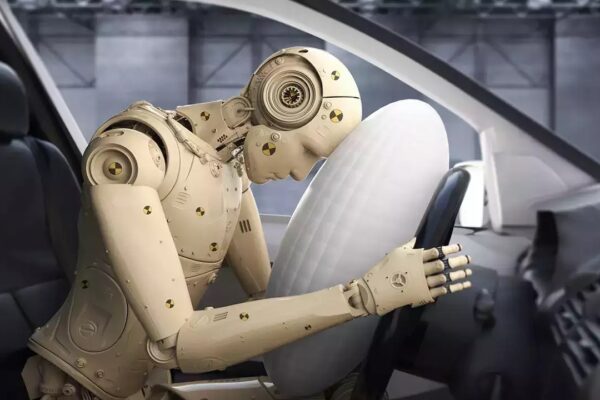The Indian automobile industry has witnessed remarkable growth over the years, becoming one of the key sectors driving the country’s economic development. With a rich history and a promising future, the industry has become a symbol of innovation, manufacturing prowess, and technological advancements. In this article, we will explore the roadmap for the growth of the Indian automobile industry, examining the factors contributing to its success, the challenges it faces, and the opportunities that lie ahead.
Introduction
The Indian automobile industry has emerged as a significant player in the global market, attracting both domestic and international manufacturers. Its growth has been fueled by various factors, including economic development, favorable government policies, and changing consumer preferences. This article aims to provide insights into the journey of the Indian automobile industry and outline the roadmap for its future growth.
Historical Overview of the Indian Automobile Industry
The roots of the Indian automobile industry can be traced back to the early 20th century when the first car rolled out on Indian roads. However, it was only after the liberalization of the Indian economy in the 1990s that the industry witnessed a significant transformation. The entry of international players, technological advancements, and increased consumer demand set the stage for rapid growth.
Factors Contributing to the Growth of the Indian Automobile Industry
Economic Growth and Rising Disposable Income
One of the primary drivers of the Indian automobile industry’s growth is the country’s overall economic development. With a burgeoning middle class and rising disposable income levels, more people can afford personal vehicles. This has led to a surge in demand for cars, motorcycles, and other modes of transportation.
Government Policies and Initiatives
The Indian government has played a crucial role in supporting the growth of the automobile industry through various policies and initiatives. Measures such as reduced import duties, tax incentives, and the implementation of the Goods and Services Tax (GST) have created a favorable business environment for manufacturers. Additionally, schemes like “Make in India” have encouraged domestic production and attracted foreign investments.
Increasing Urbanization and Infrastructure Development
Rapid urbanization and the development of infrastructure have also contributed to the growth of the Indian automobile industry. As cities expand and connectivity improves, the need for reliable and efficient transportation options has increased. This has led to a rise in demand for both passenger and commercial vehicles.
Key Players in the Indian Automobile Industry
The Indian automobile industry boasts a diverse range of players, including both domestic and international manufacturers. Companies such as Tata Motors, Maruti Suzuki, Mahindra & Mahindra, and Hero MotoCorp have established themselves as industry leaders. These companies have not only contributed to the growth of the industry but have also become global players, exporting vehicles to various international markets.
Passenger Vehicle Segment
The passenger vehicle segment is a significant contributor to the growth of the Indian automobile industry. With a growing middle class and changing consumer preferences, the demand for passenger cars and SUVs has skyrocketed. Factors such as increased affordability, improved living standards, and the availability of financing options have fueled this growth.
Growth in Demand and Changing Consumer Preferences
Over the years, there has been a shift in consumer preferences towards more feature-rich, technologically advanced, and fuel-efficient vehicles. The demand for compact SUVs and electric vehicles (EVs) has witnessed a significant upswing. Automakers have responded by introducing new models and investing in research and development to meet the evolving needs of consumers.
Technological Advancements and Electric Vehicles
Technological advancements have played a crucial role in shaping the future of the Indian automobile industry. Electric vehicles, in particular, have gained traction due to their environmental benefits and the government’s push for cleaner mobility solutions. With the implementation of policies such as the Faster Adoption and Manufacturing of Hybrid and Electric Vehicles (FAME) scheme, the adoption of EVs is expected to increase in the coming years.
Commercial Vehicle Segment
The commercial vehicle segment is another vital component of the Indian automobile industry. Commercial vehicles play a crucial role in transportation and logistics, facilitating the movement of goods across the country. The growth of this segment is closely linked to the overall economic development of the nation.
Role in Transportation and Logistics
Commercial vehicles, including trucks and buses, form the backbone of India’s transportation and logistics industry. They are instrumental in connecting rural and urban areas, ensuring the efficient movement of goods and people. As industries such as e-commerce and organized retail continue to expand, the demand for commercial vehicles is expected to rise.
Shift towards Cleaner Fuel Options
In recent years, there has been a growing emphasis on reducing pollution and carbon emissions. This has led to a shift towards cleaner fuel options in the commercial vehicle segment. Manufacturers are increasingly focusing on developing vehicles powered by compressed natural gas (CNG), liquefied natural gas (LNG), and electric powertrains. These alternative fuel options offer environmental benefits and contribute to a more sustainable transportation ecosystem.
Two-Wheeler Segment
The two-wheeler segment holds a dominant position in the Indian automobile industry. Two-wheelers, such as motorcycles and scooters, are popular among the masses due to their affordability, fuel efficiency, and ease of maneuverability. They serve as a cost-effective mode of transportation, especially in congested urban areas.
Dominance and Popularity
Two-wheelers have long been the preferred choice of transportation for many Indians, owing to their versatility and low maintenance costs. They provide a convenient and economical means of commuting, particularly for the middle class and lower-income segments of society.
Affordable Mobility Solutions
Two-wheelers also offer affordable mobility solutions in both urban and rural areas. They are well-suited for navigating through congested city streets and can access narrow lanes where four-wheelers may struggle to go. Additionally, they provide the flexibility to handle uneven terrain in rural regions.
Challenges and Opportunities
While the Indian automobile industry has experienced significant growth, it also faces several challenges and opportunities that shape its future trajectory.
Environmental Concerns and Sustainability
As the industry expands, concerns about environmental pollution and sustainability have come to the forefront. The high dependence on fossil fuels, particularly in the passenger and commercial vehicle segments, contributes to air pollution and greenhouse gas emissions. To address this, the industry is focusing on developing electric and hybrid vehicles, investing in research and development for alternative fuel technologies, and promoting sustainable manufacturing practices.
Competitive Landscape and Global Integration
The Indian automobile market is highly competitive, with both domestic and international players vying for market share. Global integration has led to increased competition and the need for manufacturers to constantly innovate and differentiate their products. Collaboration with international partners, technology transfer, and strategic alliances have become crucial for success in this dynamic industry.
Shift towards Shared Mobility and Future Mobility Solutions
The rise of shared mobility platforms and the growing popularity of ride-hailing services have disrupted the traditional ownership model. This trend, coupled with advancements in autonomous driving technology, is expected to shape the future of mobility. Automakers are adapting by exploring opportunities in the shared mobility space, investing in mobility-as-a-service platforms, and developing connected and autonomous vehicles.
Future Outlook and Roadmap for Growth
The future of the Indian automobile industry looks promising, with several key trends and developments shaping its growth trajectory.
Electric Vehicle Adoption and Infrastructure Development
The Indian government has set ambitious targets for the adoption of electric vehicles in the country. With favorable policies, incentives, and subsidies, the focus is on encouraging electric mobility. This includes the development of charging infrastructure, battery manufacturing facilities, and research and development in electric vehicle technologies. The roadmap for the growth of the industry includes a gradual transition to electric mobility, making India a global hub for EV production and innovation.
Export Potential and Global Market Expansion
The Indian automobile industry has immense export potential, with several manufacturers already exporting vehicles to international markets. The roadmap for growth involves further strengthening export capabilities, exploring new markets, and leveraging India’s manufacturing competitiveness. Increasing global demand for Indian-made vehicles, especially in emerging economies, presents an excellent opportunity for the industry to expand its footprint.
Technological Innovation and R&D
Technological innovation and research and development will continue to drive the growth of the Indian automobile industry. Manufacturers are investing heavily in R&D to develop advanced technologies, improve fuel efficiency, enhance vehicle safety, and integrate connectivity features. Collaboration with technology partners, universities, and research institutions will play a crucial role in fostering innovation and maintaining a competitive edge.
Conclusion
The roadmap for the growth of the Indian automobile industry encompasses various factors, including economic growth, government initiatives, changing consumer preferences, and technological advancements. As the industry embraces electric mobility, explores new markets, and focuses on sustainability, it is poised for continued expansion. With its rich history, manufacturing capabilities, and a talented workforce, the Indian automobile industry is well-positioned to become a global leader in the years to come.








